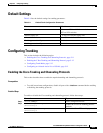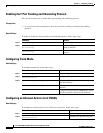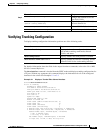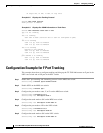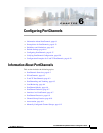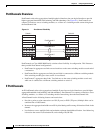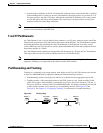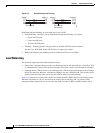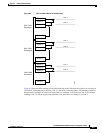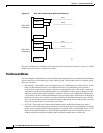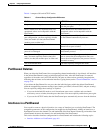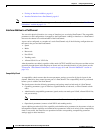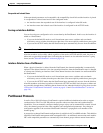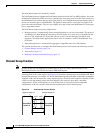
6-3
Cisco MDS 9000 Family NX-OS Interfaces Configuration Guide
OL-29284-01, Release 6.x
Chapter 6 Configuring PortChannels
Information About PortChannels
• Provides high availability on an ISL. If one link fails, traffic previously carried on this link is switched
to the remaining links. If a link goes down in a PortChannel, the upper protocol is not aware of it. To
the upper protocol, the link is still there, although the bandwidth is diminished. The routing tables
are not affected by link failure. PortChannels may contain up to 16 physical links and may span
multiple modules for added high availability.
Note See the Cisco MDS 9000 Family NX-OS Fabric Configuration Guide for information about failover
scenarios for PortChannels and FSPF links.
F and TF PortChannels
An F PortChannel is also a logical interface that combines a set of F ports connected to the same Fibre
Channel node and operates as one link between the F ports and the NP ports. The F PortChannels support
bandwidth utilization and availability like the E PortChannels. F PortChannels are mainly used to
connect MDS core and NPV switches to provide optimal bandwidth utilization and transparent failover
between the uplinks of a VSAN.
An F PortChannel trunk combines the functionality and advantages of a TF port and an F PortChannel.
This logical link uses the Cisco PTP and PCP protocols over Cisco EPP (ELS).
Note If a Cisco MDS 9124 or 9134 switch is used as a core switch, only a nontrunking F PortChannel is
supported. Trunking is not supported on this platform when NPIV enabled.
PortChanneling and Trunking
Trunking is a commonly used storage industry term. However, the Cisco NX-OS software and switches
in the Cisco MDS 9000 Family implement trunking and PortChanneling as follows:
• PortChanneling enables several physical links to be combined into one aggregated logical link.
• Trunking enables a link transmitting frames in the EISL format to carry (trunk) multiple VSAN
traffic. For example, when trunking is operational on an E port, that E port becomes a TE port. A
TE port is specific to switches in the Cisco MDS 9000 Family. An industry standard E port can link
to other vendor switches and is referred to as a nontrunking interface (See
Figure 6-2 and
Figure 6-3). See Chapter 5, “Configuring Trunking,” for information on trunked interfaces.
Figure 6-2 Trunking Only
Switch 1
Any other
switch
ISL
E port E port
Switch 1 Switch 2
EISL
TE port TE port
Trunking
79938



